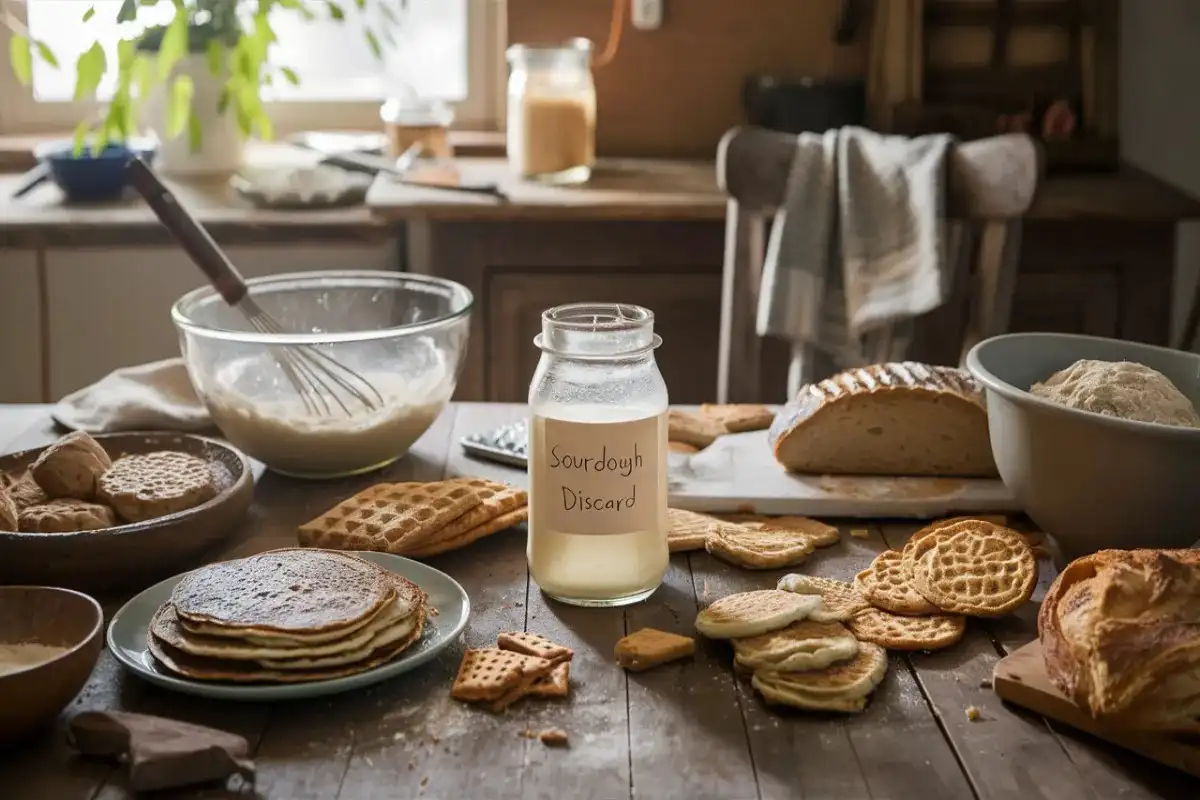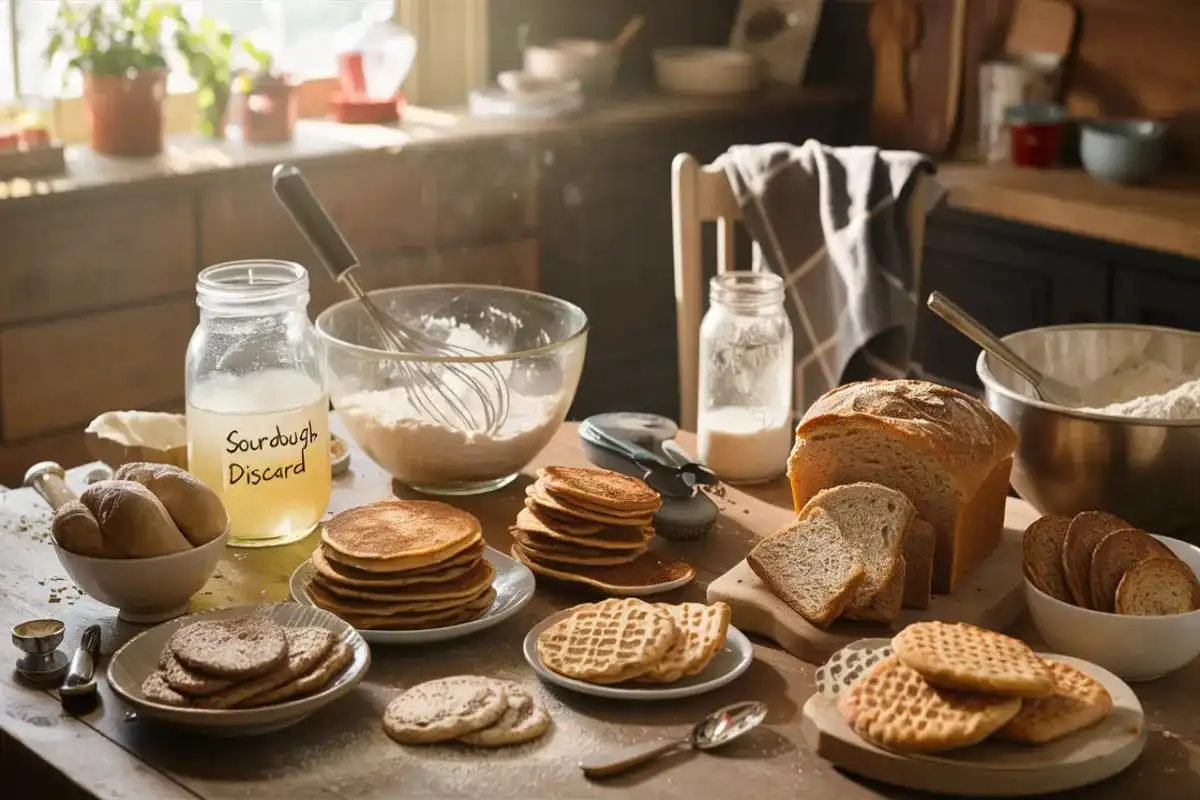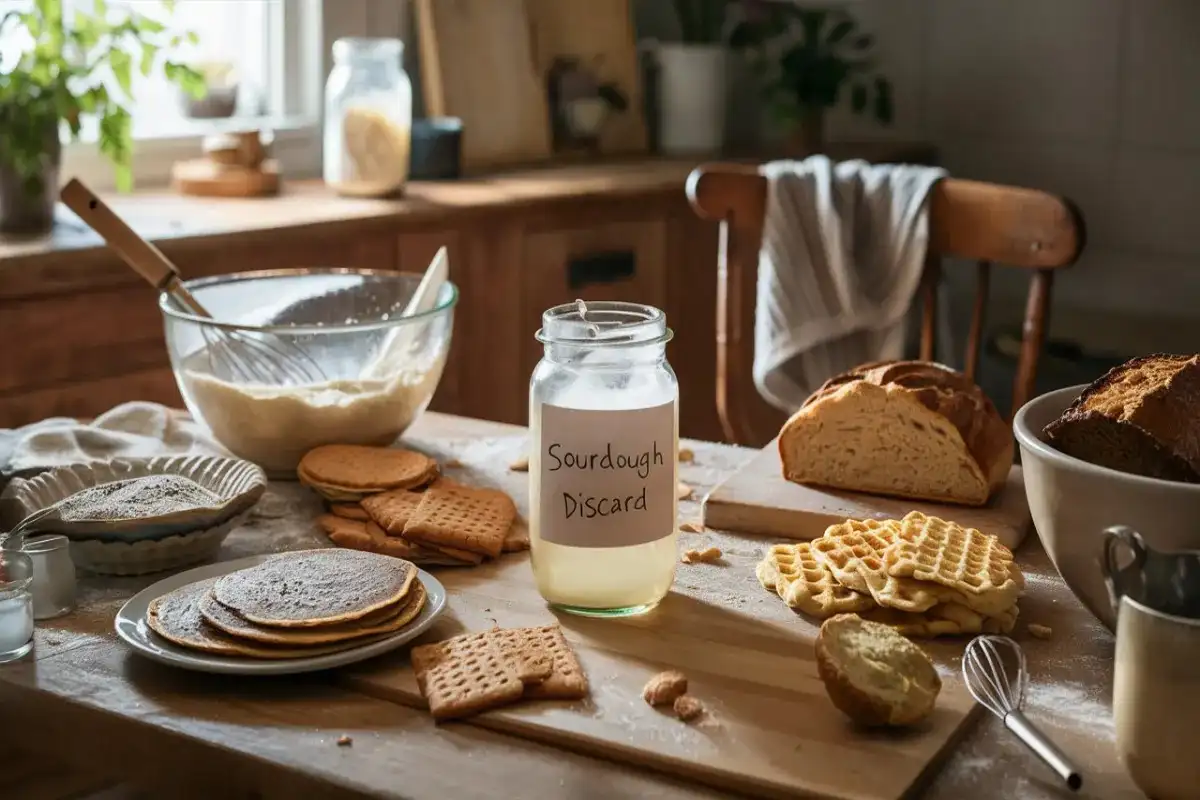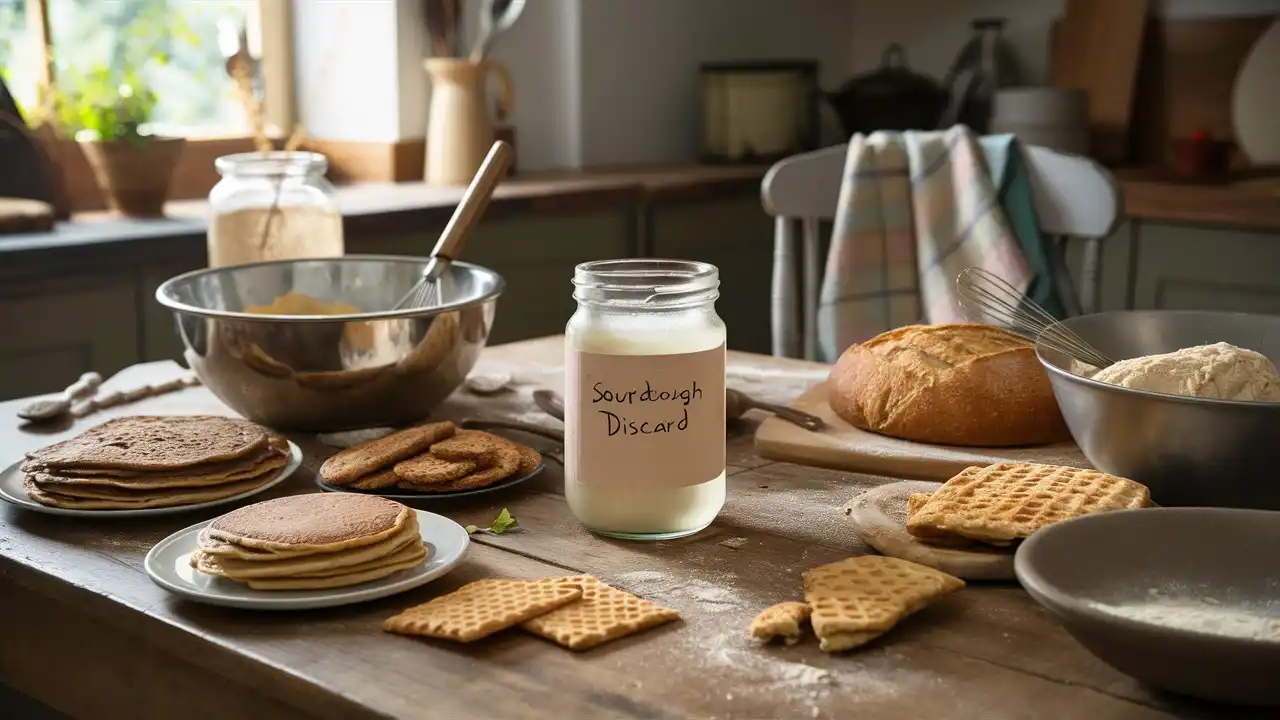Sourdough baking has captured the hearts of many home bakers, becoming a staple in kitchens worldwide. The process is both rewarding and therapeutic, offering the opportunity to create something delicious from just flour, water, and a bit of time. However, anyone who has delved into sourdough baking knows that maintaining a sourdough starter generates a byproduct known as “sourdough discard.” This discard, a portion of the starter that is removed before feeding, often poses the question: “How long can sourdough discard stay in the fridge?” In this comprehensive guide, we will explore the shelf life of sourdough discard, its uses, and how to store it properly to maximize its longevity.
Understanding Sourdough Discard
Unlike the active starter used for baking bread, sourdough discard is often not in its prime state. It might be sluggish, have a tangier flavor, and lack the rising power needed for leavening bread. However, it is still packed with flavor and can be used in various recipes, from pancakes and waffles to crackers and cakes.
How Long Does Sourdough Discard Last?

When it comes to storing sourdough discard, the fridge is your best friend. Refrigeration slows down the fermentation process, which can help extend the life of your discard. However, how long it lasts depends on several factors, including how often you refresh your starter, the temperature of your fridge, and what stage the discard was in when it was refrigerated.
General Guidelines for Storage:
- Fresh Discard (within a day or two of feeding): Fresh sourdough discard, which is removed just before a feeding, can last quite a while in the fridge. Typically, it remains good for about 1 to 2 weeks. During this time, the discard will continue to ferment slowly, developing a more intense flavor. If you plan to use it within this time frame, it’s perfectly fine to keep it in a sealed container in the fridge.
- Older Discard (more than two weeks): If your discard has been sitting in the fridge for more than two weeks, you may notice some changes. It may develop a stronger, more acidic smell, and you might see some liquid separation, known as “hooch.” Hooch is a sign that the discard is hungry and fermentation has slowed significantly. While the discard is still usable at this stage, it’s best to use it in recipes where the strong flavor won’t be overwhelming, such as in pancakes or savory crackers.
- Discard Stored for Over a Month: When sourdough discard has been stored for over a month, it’s likely past its prime. The hooch layer may be thicker, the smell more pungent, and the texture may become more liquid than doughy. While it’s not necessarily unsafe to use discard that’s been stored this long, it’s essential to assess it carefully. If it smells off (more than just the typical sour smell), has visible mold, or an unusual color, it’s best to discard it completely. If it seems okay, you can still use it, but its leavening power will be negligible, and the flavor might be too intense for some recipes.
Best Practices for Storing Sourdough Byproduct
Proper storage is crucial to extending the life of your sourdough discard. Here are some tips to ensure that your discard stays fresh for as long as possible:
1. Use an Airtight Container:
Store your sourdough discard in an airtight container to prevent it from drying out and to minimize the risk of contamination from other foods in the fridge. Glass jars with tight-fitting lids or plastic containers with secure seals are excellent options.
2. Label and Date the Container:
Since it’s easy to forget when you stored your sourdough discard, always label the container with the date. This way, you can track how long it’s been in the fridge and make informed decisions about its use.
3. Stir Before Use:
When you’re ready to use your sourdough discard, give it a good stir. Over time, the flour and water may separate, with the hooch (a brownish liquid) rising to the top. Stirring reincorporates the hooch into the discard, ensuring a more consistent texture and flavor in your recipes.
4. Consider Freezing for Long-Term Storage:
If you know you won’t be using your sourdough discard within a couple of weeks, consider freezing it. Spoon the discard into an ice cube tray or small portions and freeze until solid. Once frozen, transfer the cubes to a freezer-safe bag. Frozen discard can last for several months and can be thawed in the fridge or at room temperature before use. Keep in mind that the texture might change slightly after freezing, but it’s still perfectly usable in most recipes.
Delicious Recipes Using Sourdough Byproduct

Now that you know how to store your sourdough discard, let’s explore some delicious ways to use it. Instead of tossing it out, you can incorporate sourdough discard into a wide range of recipes that make the most of its unique tangy flavor.
1. Sourdough Pancakes:
Sourdough discard adds a delightful tang to pancakes, making them a breakfast favorite. The discard also helps make the pancakes light and fluffy. Simply mix the discard with flour, eggs, milk, and a bit of sugar to create a batter, then cook on a hot griddle. Serve with butter and syrup for a satisfying meal.
2. Sourdough Crackers:
Homemade sourdough crackers are a perfect snack or accompaniment to cheese and charcuterie boards. The discard gives the crackers a depth of flavor that pairs well with a variety of toppings. Mix the discard with flour, butter, and seasonings, roll out thin, and bake until crisp.
3. Sourdough Waffles:
Like pancakes, waffles benefit from the addition of sourdough discard. The discard imparts a rich flavor and helps achieve a crispy exterior with a tender interior. Prepare the waffle batter the night before and let it ferment in the fridge for even more depth of flavor.
4. Sourdough Pizza Crust:
Using sourdough discard in pizza dough adds complexity and a slightly chewy texture that’s hard to beat. Mix the discard with flour, water, salt, and a bit of yeast, then let the dough rise. Once ready, top with your favorite ingredients and bake in a hot oven.
5. Sourdough Biscuits:
Sourdough discard can be used to make flaky, tender biscuits with a subtle tang. The acidity in the discard helps tenderize the dough, resulting in biscuits that are soft and flavorful. Serve them with butter, jam, or as part of a hearty breakfast.
6. Sourdough Quick Breads:
Quick breads like banana bread or zucchini bread are excellent vehicles for sourdough discard. The discard adds moisture and a slight sourness that complements the sweetness of the bread. Simply substitute some of the liquid in your favorite quick bread recipe with sourdough discard.
7. Sourdough Chocolate Cake:
For a decadent treat, try using sourdough discard in a chocolate cake. The acidity of the discard enhances the chocolate flavor, making the cake rich and moist. The discard also acts as a tenderizer, ensuring a soft crumb.
Health Benefits of Using Sourdough Discard

In addition to its versatility in recipes, sourdough discard offers several health benefits. The fermentation process that occurs in sourdough starter breaks down phytic acid, an anti-nutrient found in grains that can inhibit the absorption of minerals like iron and zinc. By understanding how long sourdough discard can stay in the fridge and using it in your baking, you’re benefiting from the reduced phytic acid content, which can improve mineral absorption.
Furthermore, the natural fermentation process in sourdough discard can produce beneficial probiotics, which are good for gut health. While most of these probiotics may not survive the baking process, some research suggests that their byproducts, like lactic acid, can still have positive effects on digestion. Knowing how long sourdough discard can stay in the fridge ensures that you’re using it at its peak for maximum benefit.
Sourdough discard is also lower in sugar and higher in fiber than traditional baked goods, making it a healthier option for those looking to reduce their sugar intake or increase their fiber consumption.
Selecting Ingredients for Sourdough Discard Recipes
When it comes to making the most of your sourdough discard, the quality of ingredients you use matters. Here are some tips for sourcing the best ingredients:
1. Flour:
The type of flour you use in your sourdough discard recipes can significantly impact the final product. Opt for high-quality, unbleached flour with a higher protein content (such as bread flour) for better structure and flavor. Whole grain flours, like whole wheat or rye, can add depth and nutritional benefits to your recipes.
2. Water:
If you’re using sourdough discard in recipes where water is a primary ingredient (like in pizza dough or pancakes), consider using filtered water. Tap water often contains chlorine and other chemicals that can affect the flavor and fermentation of your sourdough-based recipes.
3. Freshness of Ingredients:
Using fresh ingredients, such as eggs, milk, and butter, will ensure the best possible outcome for your sourdough discard recipes. Fresh ingredients contribute to the overall flavor, texture, and rise of your baked goods.
Frequently Asked Questions
1. How long can sourdough discard stay in the fridge?
Sourdough discard can stay in the fridge for 1 to 2 weeks when stored in an airtight container. After this period, it may develop a stronger flavor and should be used in recipes that can handle a tangier taste.
2. How can I tell if sourdough discard has gone bad?
Discard has gone bad if it has a strong, unpleasant smell, visible mold, or an unusual color. If you notice any of these signs, it’s best to throw it away.
3. Can I freeze sourdough discard?
Yes, you can freeze sourdough discard for several months. Just portion it out, freeze, and then store the frozen pieces in a freezer-safe bag.
4. What should I do if my sourdough discard has liquid on top?
The liquid, known as “hooch,” is normal and can either be stirred back in or poured off before using the discard.
5. What are some simple ways to use sourdough discard?
Sourdough discard can be used in pancakes, waffles, crackers, pizza crusts, and biscuits, adding a tangy flavor to these dishes.
Conclusion: Maximizing the Potential of Sourdough Discard
Sourdough discard is far from waste; it’s a versatile ingredient that can elevate a wide range of recipes with its unique flavor and texture. By understanding how long sourdough discard can stay in the fridge and how to store it properly, you can make the most of this byproduct and minimize food waste in your kitchen. Knowing how long sourdough discard can stay in the fridge is essential for ensuring it remains fresh and safe to use in various dishes. Whether you’re whipping up a batch of sourdough pancakes for breakfast, baking a loaf of banana bread, or experimenting with sourdough pizza crust, your discard has the potential to become a culinary asset rather than something to toss away. With proper storage, creative recipes, and a bit of experimentation, sourdough discard can bring a new level of flavor to your cooking and baking endeavors.

